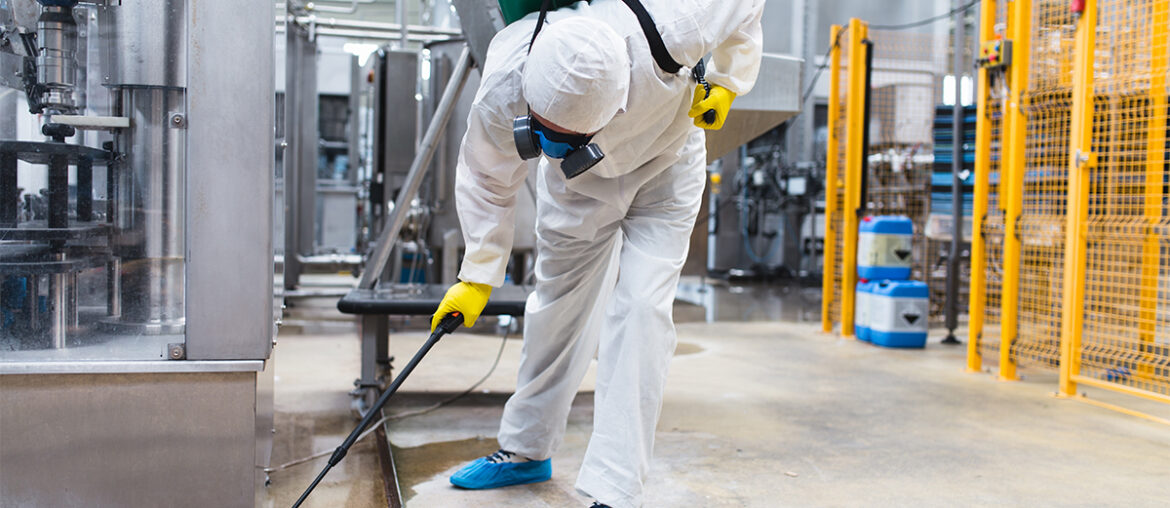For pest control technicians, having the right supplies is not a matter of convenience but a critical factor in delivering effective, lasting results that ensure customer satisfaction and protect public health. The global pest control services market is projected to more than double, reaching USD 51,208 million by 2035 from its 2024 value, highlighting the immense responsibility and opportunity for professionals in the field. This guide provides a definitive overview of the essential products, equipment and chemicals that form the backbone of any successful pest management strategy, moving beyond a simple shopping cart list to a strategic blueprint for operational excellence.
The Foundation: Essential Commercial-Grade Sprayers and Application Tools
The efficacy of even the most advanced pest control chemicals is directly tied to the quality and precision of their application. Commercial-grade sprayers and tools are engineered for durability, accuracy and safety, allowing pest control technicians to execute treatments with confidence. These tools are the first line of offense in any comprehensive insect control solutions plan.
Backpack Sprayers
For treating large perimeters, landscapes and expansive interior spaces, backpack sprayers are indispensable. Commercial models offer superior comfort with padded harnesses and ergonomic designs for prolonged use. Key features professionals look for include high-capacity tanks (typically 4 gallons), durable seals resistant to harsh chemicals, and multiple nozzle options. A fan-spray nozzle is ideal for creating a uniform barrier with a product like Demand CS Insecticide Concentrate, a popular microencapsulated insecticide known for its long residual effect. For wood-destroying organisms, a backpack sprayer can efficiently apply preventative treatments like Bora Care Wood Treatment across large surfaces such as attic rafters or crawl spaces.
Handheld Sprayers
Handheld pump sprayers, usually 1-2 gallons in size, offer precision for targeted interior and exterior applications. They are essential for crack-and-crevice treatments, spot treatments and applications in sensitive areas where overspray must be minimized. A professional-grade handheld sprayer features a durable brass or stainless steel wand and a pin-stream nozzle for injecting insecticides deep into pest harborage areas. This tool is perfect for applying a specialized spider and scorpion insecticide along baseboards, window frames and entry points where these pests are commonly found. Their portability makes them a daily workhorse for technicians addressing specific infestations within commercial properties.
Dust Applicators and Bait Guns
Not all treatments are liquid. Dust applicators, such as bulb or bellows dusters, are critical for applying fine insecticidal dusts like diatomaceous earth into wall voids, electrical outlets and other inaccessible areas where pests hide. This method provides long-lasting control in dry, undisturbed environments.
Similarly, bait guns are specialized tools that provide precise, metered application of gel baits. For a persistent cockroach infestation in a commercial kitchen, a bait gun allows a technician to apply cockroach gel bait in small, strategic placements, maximizing effectiveness while minimizing exposure. Precision tools like these are also used to apply Termidor Foam Termiticide, a non-repellent termiticide foam that expands to fill galleries and voids, ensuring complete coverage against termites.
PestPac’s mobile app enhances service efficiency by allowing technicians to track which materials and equipment are used on each job, ensuring compliance and accurate inventory management.
Strategic Defense: Bait Stations and Monitoring Devices
A modern pest management strategy relies heavily on intelligence gathering and targeted control. Bait stations and monitoring devices are the essential tools for this approach, providing crucial data on pest activity and delivering lethal control with minimal environmental impact.
Rodent Bait Stations
Effective rodent control measures in a commercial setting demand security and durability. Tamper-resistant rodent bait stations are mandatory, especially in facilities accessible to the public, children, or non-target animals. These lockable stations protect the rodenticide from the elements and accidental exposure, ensuring it is only accessible to the target pest. They are designed to hold various bait forms, from blocks like Contrac All Weather Blox, which is highly effective in damp or outdoor environments, to soft baits. Proper rodent identification helps determine the best bait and station placement for maximum efficacy.
Insect Monitoring Traps
Monitoring is a cornerstone of Integrated Pest Management (IPM). Simple yet highly effective tools like glue boards are invaluable for detecting the presence, location and severity of crawling insect and small rodent populations. They provide a visual record that helps technicians make informed decisions about treatment strategies.
For specific pests, pheromone traps can be used to monitor and capture target insects, such as stored product pests in a warehouse or food processing plant. Using these tools for ongoing monitoring allows for early detection and proactive intervention, preventing a minor issue from escalating into a full-blown infestation.
Safety First: Personal Protective Equipment for Commercial Applications
Handling professional-grade pest control products is a serious responsibility. The health and safety of pest control technicians is paramount, and a comprehensive set of personal protective equipment (PPE) is non-negotiable. Adhering to the product label’s PPE requirements protects technicians from chemical exposure and ensures regulatory compliance.
Respirators and Masks
When applying fine mists, dusts or aerosols, respiratory protection is critical. A half-mask or full-face respirator with the appropriate cartridges (e.g., organic vapor cartridges) protects the lungs from inhaling harmful chemicals. The use of aerosols for wasps or fogging applications in enclosed spaces necessitates robust respiratory protection to prevent acute and chronic health issues.
Chemical-Resistant Gloves and Eyewear
The hands are the most common point of chemical exposure. Chemical-resistant gloves, typically made of nitrile or butyl rubber, must be worn when mixing, loading, and applying pesticides. They should be unlined and long enough to cover the wrists. Safety glasses or goggles are equally important to protect the eyes from splashes, spills or airborne droplets during application, preventing serious injury.
Protective Clothing and Footwear:
Long-sleeved shirts, long pants and chemical-resistant coveralls provide a barrier between the skin and pesticides. For certain applications, particularly those involving restricted-use pesticides or overhead spraying, a chemical-resistant suit may be required. Sturdy, waterproof boots protect the feet from spills and ensure stable footing on various surfaces, completing the professional safety ensemble.
Beyond the Basics: Advanced Tools and Specialty Supplies
Top-tier pest control companies differentiate themselves by investing in advanced equipment that enhances their diagnostic and treatment capabilities. These tools allow for more thorough inspections and specialized applications, leading to superior results.
Inspection Tools
A high-quality flashlight is a technician’s most fundamental inspection tool, but the pros go further. Moisture meters help identify areas with water damage, a condition conducive to pests like termites and carpenter ants. Borescopes (small cameras on flexible cables) allow for visual inspection inside wall voids and other inaccessible areas, confirming infestations without destructive methods. Accurate insect identification is the first step, and these tools provide the visibility needed to do it correctly.
Foggers and Misters
For large-scale space treatments, such as disinfecting a facility or controlling flying insects in a warehouse, thermal foggers or Ultra Low Volume (ULV) misters are highly efficient. These machines generate a fine aerosol that can penetrate hard-to-reach areas, providing comprehensive coverage quickly. They are essential for public health vector control, odor control and managing severe infestations in large commercial structures.
Integrated Pest Management (IPM) Specific Supplies
A successful IPM program often involves non-chemical solutions. This includes supplies like exclusion materials (caulking, steel wool, door sweeps) to physically block pests from entering a structure. It also includes specialized trapping systems, such as a liquid bait system like the Gourmet Green Way Liquid Ant Bait station, which can be highly effective against certain ant species that are not attracted to gels or granules. Investing in these quality products reinforces a commitment to a holistic and sustainable pest management strategy.
The PestPac Advantage: Optimizing Your Commercial Supply Chain
Having the right supplies is only half the battle; managing them efficiently is what drives profitability and operational excellence. This is where industry-specific software like PestPac becomes a game-changer, transforming supply management from a manual chore into a strategic advantage.
Streamlined Inventory Management
PestPac allows businesses to track chemical and material usage in real-time. As a technician completes a service and records the use of cockroach gel bait or a set number of glue boards on their mobile device, the inventory on hand is updated. This prevents stockouts, reduces waste from expired products and provides clear data on which supplies are most frequently used.
Comprehensive Reporting and Analytics
Data-driven decisions are key to growth. PestPac provides powerful analytics on material costs per job and overall profitability, including material usage reports by technician. This insight allows managers to optimize purchasing, negotiate better prices with suppliers and ensure that product usage aligns with service revenues.
Mobile Accessibility for Field Teams
PestPac’s mobile application empowers pest control technicians in the field to record usage accurately, check smart traps and view service histories, all from a smartphone or tablet. This immediate access to information ensures compliance and enhances on-site professionalism.
Scalability and Stability
As a pest control business scales, its logistical challenges multiply. A generic system or manual spreadsheet will quickly become overwhelmed. PestPac is built to scale, providing a stable, robust platform that can manage the complex supply chain of multi-vehicle, multi-branch operations as effectively as a single location, ensuring that growth is supported by efficient operations.
Choosing the Right Supplies and Partner for Your Business
Selecting the right commercial pest control supplies involves more than just price. Professionals must consider the target pest, the environment of application (e.g., a hospital versus a warehouse), regulatory requirements, and the product’s compatibility with an IPM approach.
Partnering with reputable suppliers who offer technical support and a wide range of quality products is essential. In a market where many DIY pest solutions are available, professionals must distinguish their service with superior, often restricted-use, products and unmatched expertise.
Conclusion: Equip for Excellence, Empower With PestPac
The difference between good and great lies in the details. A comprehensive arsenal of high-quality products, equipment and chemicals is the undeniable foundation of effective service. However, the true path to sustainable growth and market leadership is paved with operational efficiency.
By pairing a superior physical toolkit with a powerful management platform like PestPac, companies can optimize every facet of their supply chain, from inventory and dispatch to reporting and compliance. This integrated approach ensures that your business is not just equipped for today’s challenges but empowered to excel in the competitive landscape of tomorrow. Book your demo today to see how PestPac can help your supplies and your business go further.




